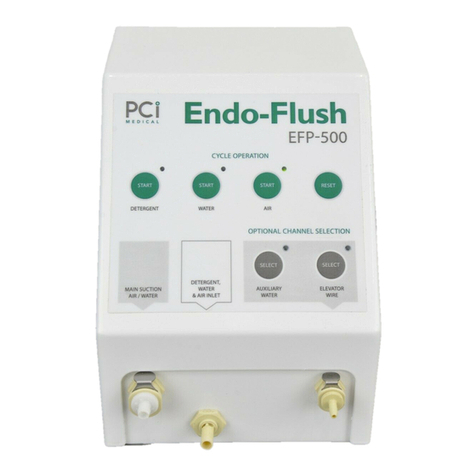
MOST 20-2B
ii
PACIFIC CONSOLIDATED INDUSTRIES 350003 Rev D
SAFETY SUMMARY
The following are general safety precautions that are not
related to any specific procedure and therefore do not
appear elsewhere in this technical manual. These are
general safety precautions and instructions that people
must understand and apply during many phases of
operation and maintenance to ensure personal safety and
health and the protection of Government property.
Throughout this manual you will see three types of
notations which contain special information:
NOTE: Provides additional information that may be
helpful in performing a specific task.
WARNING: Provides information about conditions
which require special attention and precautions to
avoid serious injuries.
CAUTION: Provides information about conditions
which require special attention and precautions to
avoid equipment damage.
Be sure to read the information in the notes, cautions, and
warnings carefully, and consult someone experienced in
handling oxygen equipment about any issues that are
unclear. Additional safety guidelines related to specific
components of the MOST are described in the appropriate
chapters.
DANGEROUS PRESSURES
Care must be taken during operation to ensure that all
fittings are proper and tight. All system components must
be compatible with pressure applied. Personnel must be
protected by a minimum of safety glasses when transfilling
or repairing.
WORKING WITH OXYGEN
Oxygen used in the medical profession can be very
hazardous. Although oxygen does not burn, it does support
combustion. A Material Safety Data Sheet is available at
Pacific Consolidated Industries.
Oxygen systems must be properly cleaned and inspected in
accordance with Compressed Gas Association pamphlet
G-4.1 prior to use to ensure that no combustible materials
remain in the connecting piping and fittings. If you are not
familiar with oxygen cleaning procedures contact the
Compressed Gas Association or Pacific Consolidated
Industries prior to putting oxygen into your piping and
distribution system. The Compressed Gas Association’s
web site is www.cganet.com.
Observe strict cleanliness procedures when fabricating and
connecting the oxygen piping.
Only operate the oxygen equipment in a well-ventilated
area.
GUIDELINES FOR HANDLING
CYLINDERS
While the principal function of the MOST is to provide
gaseous oxygen for medical use, conventional oxygen
cylinders are still an integral part of the method for
supplying backup oxygen and for mobile oxygen
requirements (for example, on board ambulances).
Oxygen cylinders are under extremely high pressure (as
much as 2,250 psi) and present a number of associated
hazards as a result.
WARNING: The sudden release of this pressure,
whether by puncture, dropping, or loss of pressure
can easily turn the cylinder into a projectile
hurtling across the ground and through the air.
Take extreme care when filling cylinders and
when handling charged cylinders.
WARNING: Do not drag or slide cylinders or lift
them by the pressure cap; this may damage the
cylinders and cause the sudden release of,
cylinder pressure. Use a suitable hand truck,
forklift, roll platform, or similar device to move
cylinders.
WARNING: Do not drop cylinders or permit them
to strike against each other or other surfaces; this
may damage the cylinders and cause the sudden
release of cylinder pressure. Firmly secure
cylinders during moving and transport.
WARNING: Do not fill cylinders too rapidly.
Excessive heat may build up in the gas and result
in a failure of the seals in the cylinder valves and
possible ignition.




























